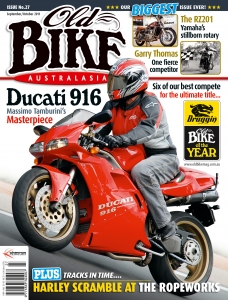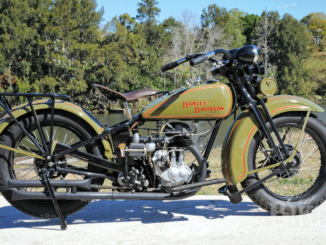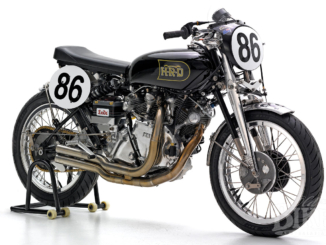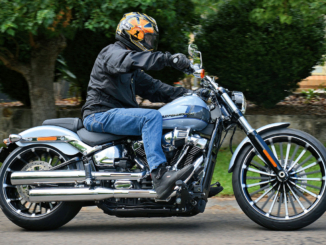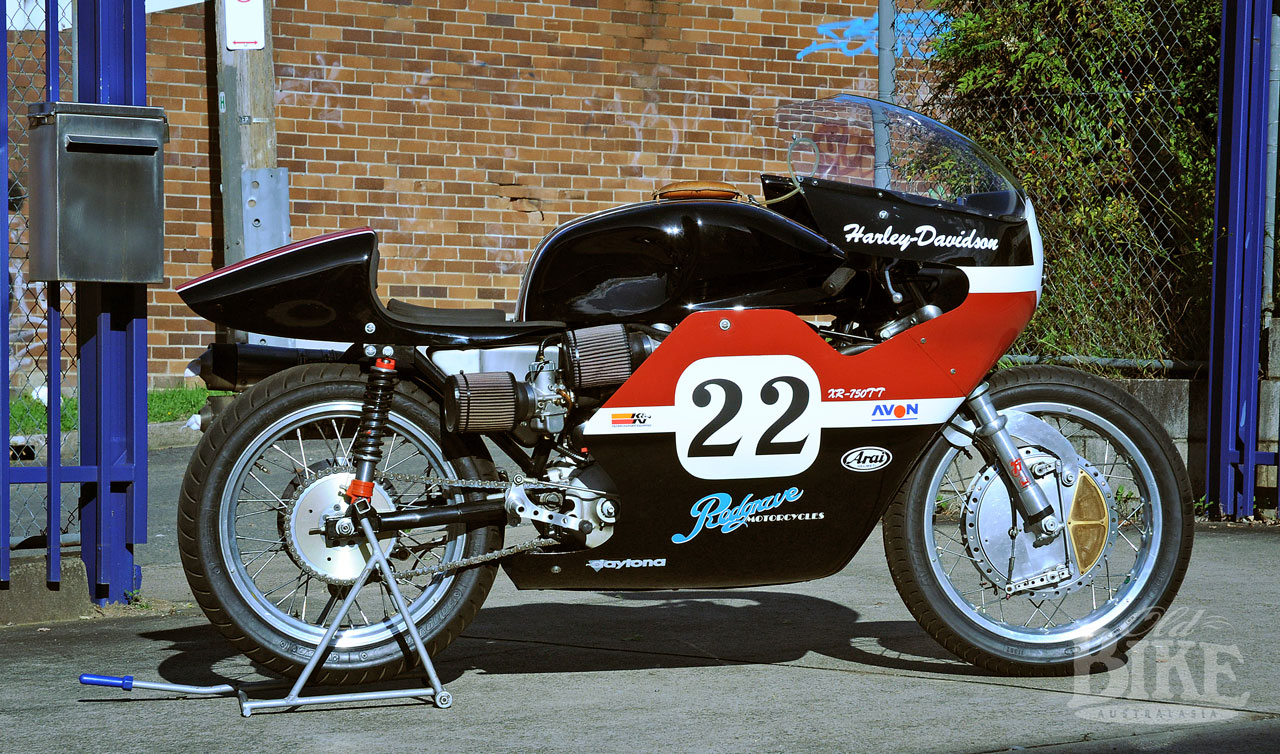
If there is one enduring image that defines the XRTT, it is of the unassuming Californian Cal Rayborn serving it up to the Brits in the Trans Atlantic Match Race series in 1972. Not only was Rayborn the antithesis of the brash Yank racer, his mount was utterly different to anything else on the grid, and the vast crowds that followed the Easter series simply lapped it up.
The home heroes he defeated in three of the six encounters were serious competitors on well-fettled bikes: Ray Pickrell, John Cooper, Paul Smart and Barry Sheene among them. Of course, Rayborn, who tragically lost his life on a Suzuki at Pukekohe in 1973, was not the only successful XRTT rider, you can add Mert Lawill, Jay Springsteen, Renzo Pasolini and several others to that list, but it was Rayborn who propounded the XR legend outside the US.
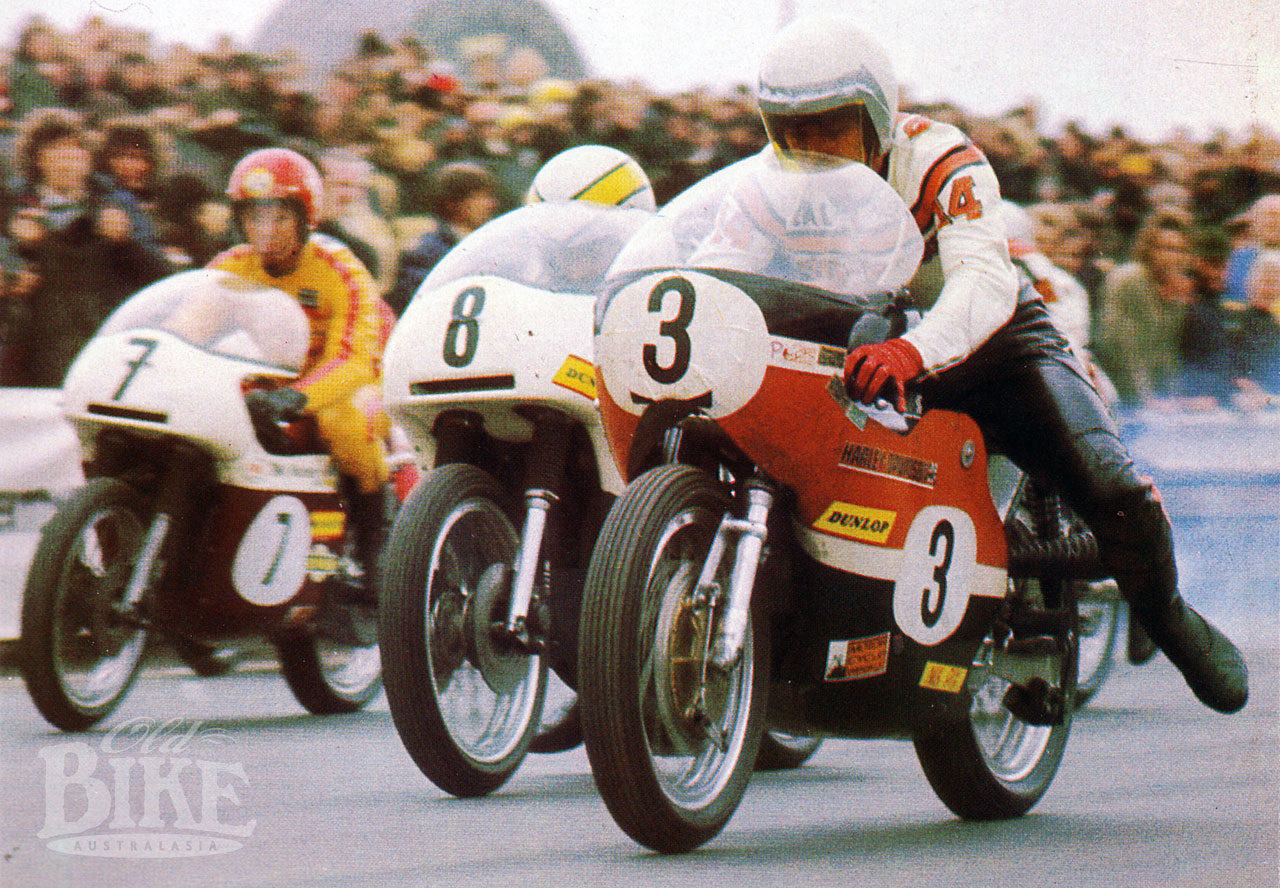
The XRTT came into being as a replacement for the side-valve KRTT, designed by Harley race-shop boss Peter Zylstra. Early iron-engined versions were referred to as ‘Waffle Irons” due to their propensity to overheat. The new engine drew heavily from the Sportster parts bin, and Zylstra’s valve gear ideas were inspired by the Aermacchi designs, which initially didn’t work and suffered from rocker failure. The whole project was severely constrained by the cash crisis that afflicted H-D at the time. As a flat-tracker, the XR was the tool to have, and probably still is, but on the road racing scene the competition was much stiffer. After all, a two-valve pushrod vee-twin with a road-based four speed gearbox was hardly electrifying specifications compared to the tackle in the early days of the Formula 750 class; Tridents, Kawasaki H2R, Ducati, Suzuki 750 triple – even the venerable but well-developed Norton twins were more than a match for the XRTT, on paper at least. But in terms of charisma, the Harley had it in spades – bits sticking out everywhere, massive wheels and brakes, giant tank and seat, and that unmistakable exhaust note.
The XRTT certainly made an impression on Greg Webb, owner of the Sydney-based motorcycle accessory company Kenma. “I just fell in love with the look of the XRTT,” Greg confesses, “ and I tried to buy a dirt tracker in the early ‘80s, but I couldn’t find one that didn’t have cracks in the crankcases – I looked at three or four but they just weren’t worth owning. Then a friend of mine who worked at Sacramento H-D called to say he had a set of new XRTT crankcases, and why don’t we just build one, because the parts were still available to order via certain dealers of which Sacramento was one. Generally, many parts were similar to the road parts, but with an ‘R’ designation. There were some things we couldn’t get, like a magneto – which fits in front where the generator is on a Sportster – as well as the drive gears and adapter plates, but Jay Springsteen supplied us with 10 or 12 magnetos from which we were able to build a good one, plus six sets of cams. He was really helpful and just said to return all the left over bits when we were finished. We discovered there are actually three different camshafts for 1972 and you have to have the right ones to fit the right cases. I had a lot of help from Steve Storz from Storz Performance, who once worked in the H-D race factory, and eventually got the correct cams from him.”
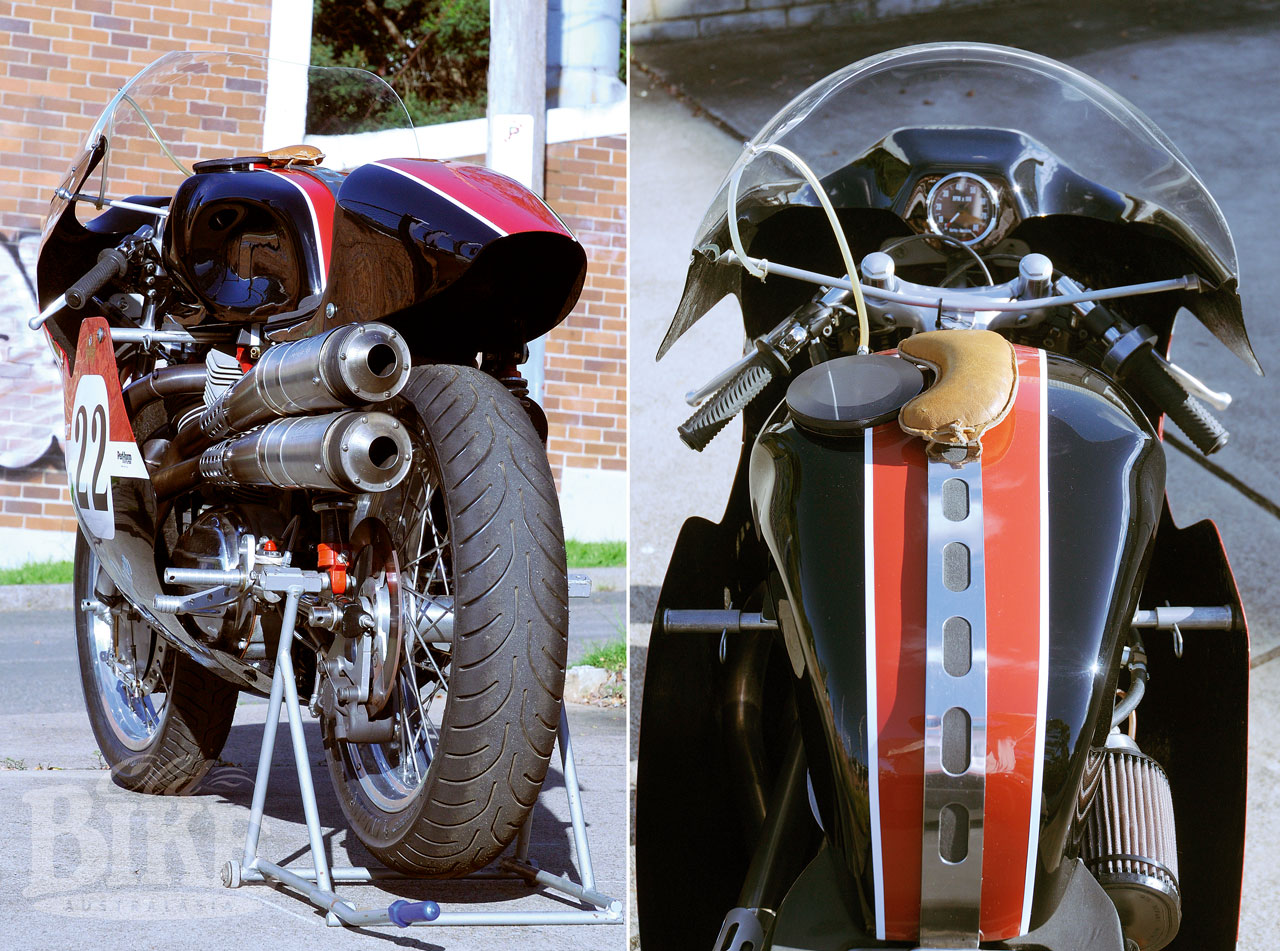
Exactly how many XRTTs were built varies according to who you talk to, but between 20 and 30 would be a safe bet, and 200 of the dirt track version were built to comply with AMA homologation. According to Greg, 12 of the road racers were used by the H-D race team but the balance proved difficult to sell through dealers, despite a glossy brochure being produced and a full inventory of spares available, so many had their engines plucked out for use on the dirt tracks, and the chassis scrapped. Had anyone foreseen what they would be worth in the future, it would have been a far better bet to simply stash them away. Aussie Tony Blain paid a reputed $185,000 for the ex-Rayborn model, and this caused such an outpouring of grief Stateside that it was subsequently sold back to the US.
Back to Greg’s machine; the frame was built by Terry Knight of Knight Racing Frames in USA. Knight had the original drawings but the job took ages, Greg says, and when received the swinging arm was incorrect. That item was re-made in Australia by the late Bob Martin using the factory drawings. “It (the swinging arm) is a complex thing”, says Greg. “It is cut through what is referred to as the Tomahawk section of the Sportster swing arm and rebuilt from there. Nichells in Milwaukee actually built the original frames for the road racers.”
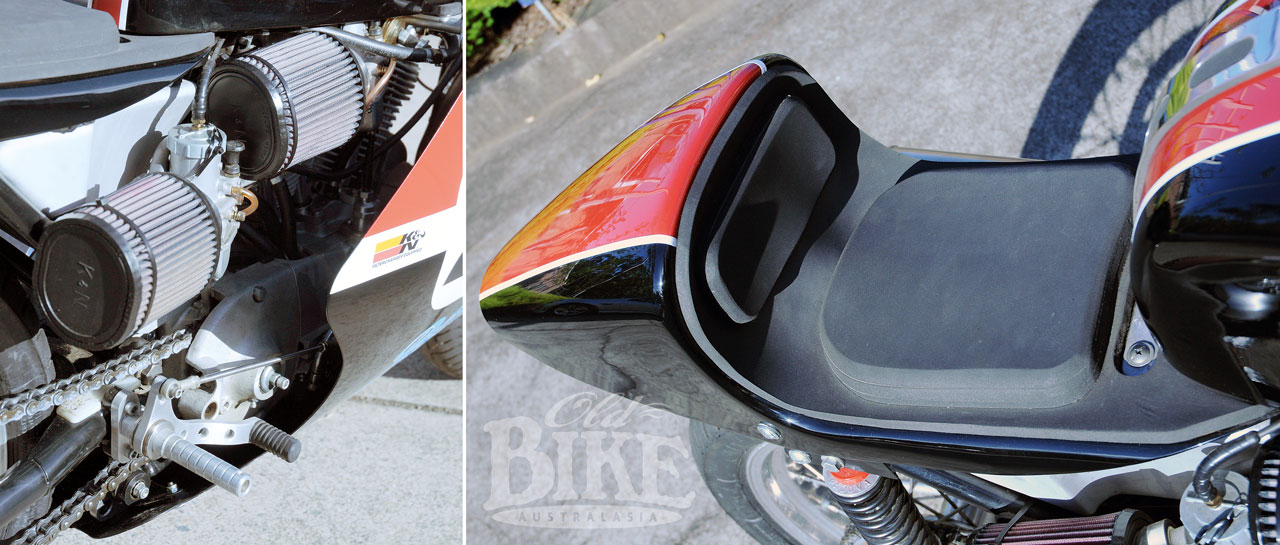
Slowly the engine components came together in the USA, while Greg hunted for other components. “Stephen Wright was a big help. He had an iron XR and the fibreglass was basically identical to the alloy bike, so he got some moulds taken off, which were not that good but it was a start. I found a screen in Florida and we tracked own Jack Hagerman who made the original oil tanks – the one on the road racer is bigger than the flat tracker. Pete Zylstra of the Harley Race Factory supplied the chassis blueprints that showed the steering head was three inches lower on the road racer, and Team Obsolete in New York also helped with details of the front and rear suspension. I’ve used 35 mm Ceriani GP forks as on the originals, and Bitubo rear shocks, whereas the original bikes would have probably used S&W. The front brake is a Yamaha double-sided off a TD2 or 3. The factory bikes used the big Fontana brakes which is what Yamaha copied anyway, and whereas the Fontana was about $3,000 at the time – if you could find one – the Yamaha brake cost me $500 because everyone had taken them out in favour of disc brakes. Rear brake is a copy of a Barnes hub with a Grimeca calliper and Airheart master cylinder. The rims have been a contentious point, because even though they are original sizes – 2.5” WM4 18 on the front and 3.5” WM6 18 rear, they are wider than the (local) Post-Classic rules allow.”
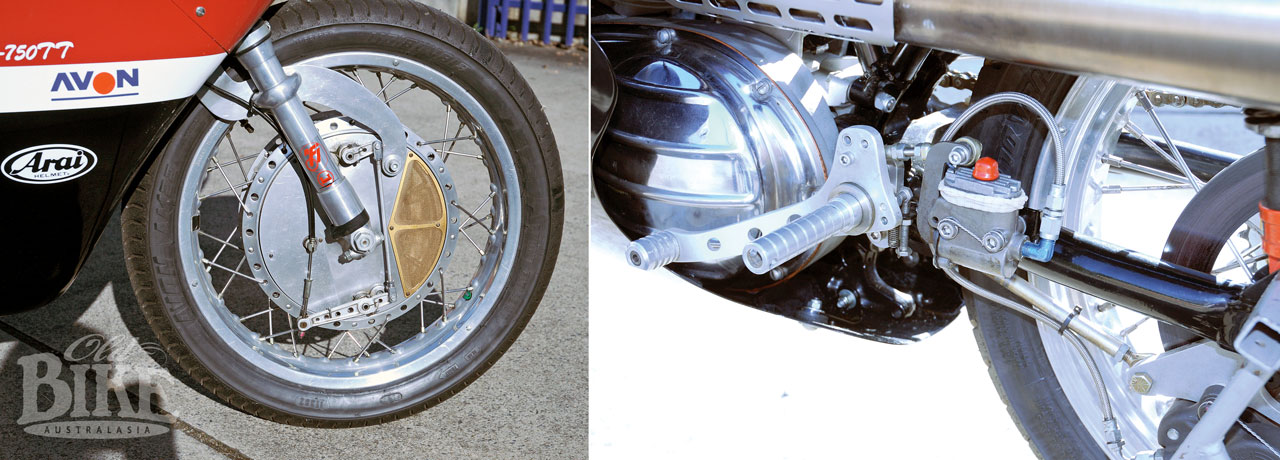
After an eight-year build, Greg’s XRTT was up and running by late 1991. The engine was assembled by Richard Nicholls of Redgrave Motorcycles in Sydney and has proved totally reliable. It is a bit larger than standard at 797 cc, still running H-D pistons in over-bored barrels. “They’re not even forged pistons,” says Greg, “but they do the job well. I used 38 mm Mikunis, but the original 36 mm would be better. The 4-speed gearbox is a real weak point. It’s basically a K-series box so it eats gears, although it does have a good clutch, which is basically Sportster. I raced it until about 2003 and managed to fall off it at Amaroo – it was a real handful around there. Then Stephen Byrnes rode it with good results, but he threw it away at Eastern Creek. That wiped out the TZ700 Yamaha twistgrip, the gearchange shaft and the right side of the fairing. The fairing is a copy of the one they used at Daytona which was made so the rider could tuck in completely – the seat cowling is also bigger than what they used on the shorter circuits. It’s an absolute mongrel to get on and off.”
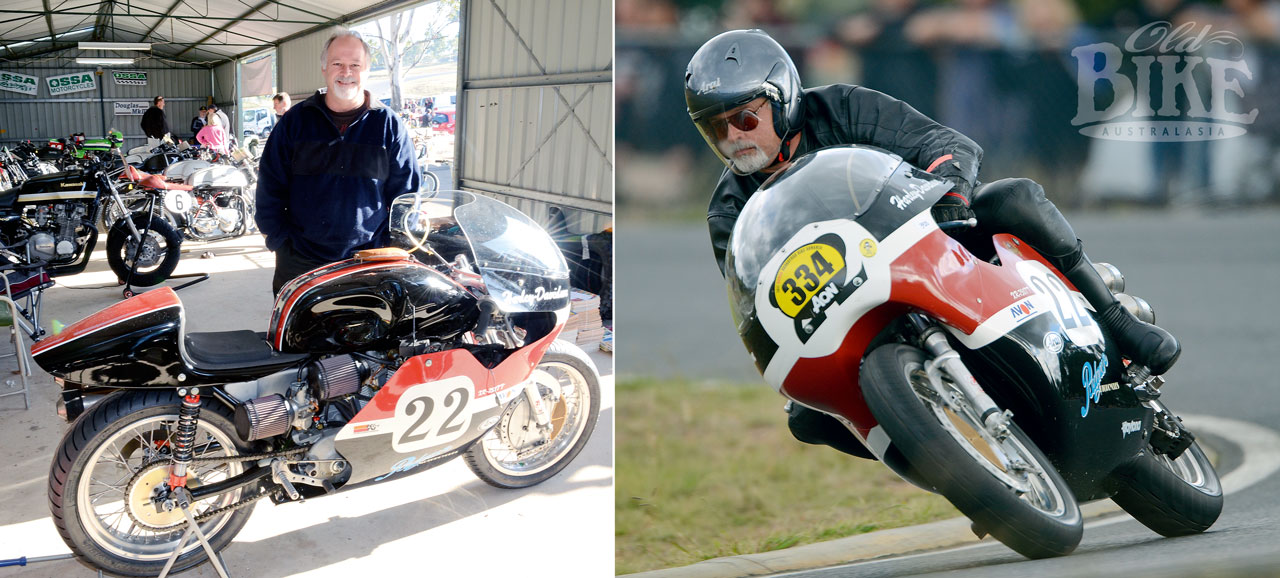
At Easter 2011 Greg gave the XRTT its first run for years when he took it to the Honda Broadford Bike Bonanza. Amongst the other big twins on the track, including the Britten and the Irving Vincents, the XR stood out both visually and audibly. Greg enjoyed the weekend so much he’s now building a Rickman BSA flat tracker for next year’s HBBB, while the XR has gone back to its normal abode – taking pride of place in Greg’s office.
Story Jim Scaysbrook • Photos Bill Forsyth and Jim Scaysbrook
